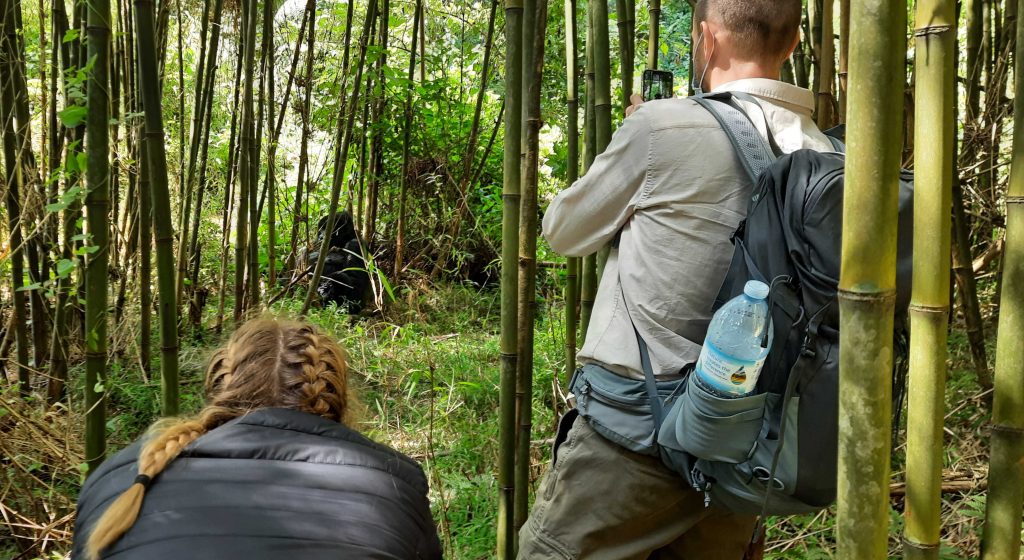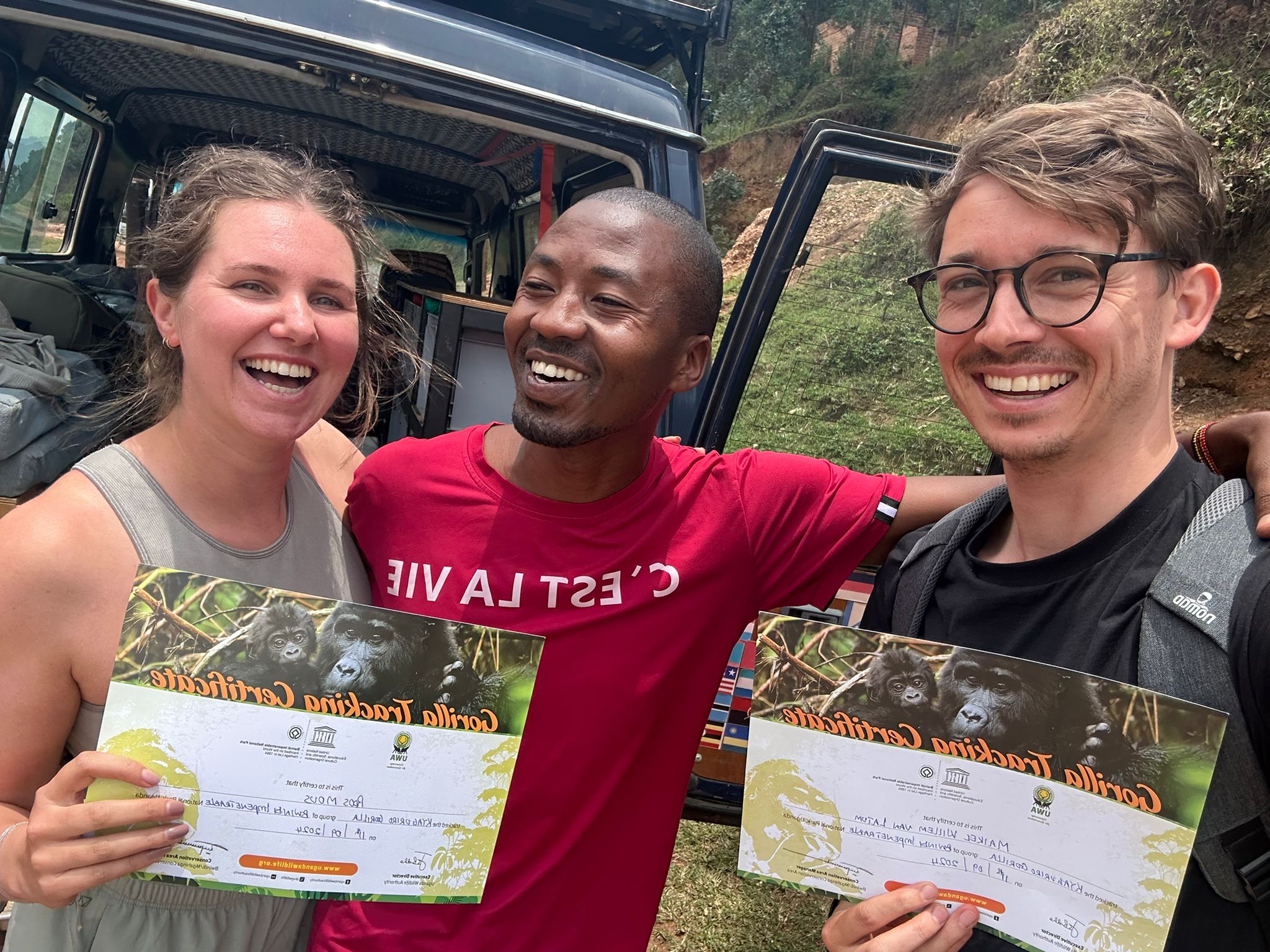Comparing Bwindi and Mgahinga for the Gorilla Tracking Experience

Comparing Bwindi and Mgahinga for the Gorilla Tracking Experience. Gorilla tracking in Uganda is a once-in-a-lifetime experience that immerses you in the raw beauty of the African jungle while bringing you face-to-face with one of our closest relatives—the endangered mountain gorilla. Uganda is home to two major destinations for this bucket-list adventure: Bwindi Impenetrable National Park and Mgahinga Gorilla National Park. Though they offer a similar core experience, each park has its unique features, pros, and considerations. Here’s a detailed comparison to help you decide which destination best suits your gorilla tracking aspirations.
1. Location and Accessibility
Bwindi Impenetrable National Park is located in southwestern Uganda and is divided into four main sectors: Buhoma, Ruhija, Rushaga, and Nkuringo. Access to Bwindi can be a bit challenging due to its remote location, though recent infrastructure improvements have made it more accessible from major towns like Kabale and Kisoro.
Mgahinga Gorilla National Park, on the other hand, is smaller and situated in the far southwestern corner of Uganda, bordering Rwanda and the Democratic Republic of Congo. It is closer to the town of Kisoro and is more easily reached by road or domestic flights.
Verdict:
If you’re looking for easier logistics and are already near the Kisoro area, Mgahinga might be the more convenient choice. However, Bwindi offers more flexibility in tracking sectors.
2. Size and Gorilla Population
Bwindi is larger and home to more than half of the world’s mountain gorilla population. It hosts over 20 habituated gorilla families that are available for tracking, providing ample options for visitors and increasing the likelihood of permit availability.
Mgahinga has just one habituated gorilla family, the Nyakagezi group. This family is known for its stability and tendency to stay within the park boundaries, although in the past, it occasionally crossed into Rwanda or the DRC.
Verdict:
Bwindi wins in terms of sheer numbers and variety of gorilla families. If you’re looking for a higher chance of securing a permit or want to plan a trip with a larger group, Bwindi is a safer bet.
3. Scenery and Landscape
Bwindi is dense, hilly, and as its name suggests, impenetrable. The thick rainforest provides an authentic jungle feel with misty mornings, lush foliage, and challenging but rewarding treks. The terrain can be steep and muddy, adding to the adventure.
Mgahinga sits at a higher elevation and is part of the Virunga Volcanoes. Its terrain is dominated by volcanic slopes, bamboo forests, and stunning views of the surrounding mountains. The park is also less dense, making the trek slightly easier for some travelers.
Verdict:
If you’re seeking a more rugged, jungle-like experience, go with Bwindi. For clearer views and dramatic volcanic backdrops, Mgahinga stands out.
4. Crowds and Experience
Despite its size, Bwindi tends to attract more tourists due to its global reputation and greater capacity. While this doesn’t diminish the experience, some sectors can feel busier, especially during peak seasons.
Mgahinga offers a more intimate and quiet experience. With only one gorilla group available for tracking, daily visitors are strictly limited, often resulting in a more personal encounter.
Verdict:
If you prefer a less crowded, more serene experience, Mgahinga is ideal. Bwindi takes the lead for a wider range of services and group options.
5. Other Wildlife and Activities
Bwindi is not only known for gorillas. It’s a UNESCO World Heritage Site and a biodiversity hotspot with over 350 bird species, monkeys, and small mammals. Some sectors also offer the Gorilla Habituation Experience, allowing you to spend up to four hours with a semi-habituated family—a unique opportunity not available in Mgahinga.
Mgahinga may be smaller, but it’s equally impressive. It’s the only park in Uganda where you can see golden monkeys and is ideal for hikers. You can climb one of the three dormant volcanoes—Mount Sabinyo, Mount Gahinga, or Mount Muhabura—adding another layer of adventure to your trip.
Verdict:
For birdwatchers and those seeking a longer gorilla interaction, Bwindi is unbeatable. But if you’re into hiking and want a dual primate experience (gorillas + golden monkeys), Mgahinga is the hidden gem.
6. Permit Availability and Cost
Gorilla tracking permits cost the same for both parks—currently USD 800 for foreign non-residents, as of 2025. However, Bwindi, with its multiple sectors, offers more permit availability, making it easier to secure a spot, especially on short notice.
Mgahinga‘s single gorilla family means fewer permits and limited slots. While this adds to the exclusivity, it also makes it harder to get in unless you plan well in advance.
Verdict:
Bwindi is more accessible in terms of securing a permit, especially for larger groups or last-minute bookings.
Both Bwindi Impenetrable National Park and Mgahinga Gorilla National Park offer incredible, unforgettable gorilla tracking experiences. Your choice ultimately depends on your preferences:
Choose Bwindi if you want variety, availability, and a classic jungle experience.
Choose Mgahinga if you prefer fewer crowds, easier trekking, and stunning volcanic scenery.
Whichever park you choose, encountering a mountain gorilla in the wild is sure to be one of the most profound and awe-inspiring
experiences of your life.

Request for a Quote
Start planning your adventure trip today with a professional expert available to help you 24/7. Encounter Africa on your own terms.
Inquire Now
Visa Entry
Uganda offers online visa applications, but many travelers find it easier to pay (US$100) and obtain a visa upon arrival at points like Entebbe International Airport. For travel into Rwanda and Kenya, it's recommended to apply for an East African Visa.
Read More About Visas


